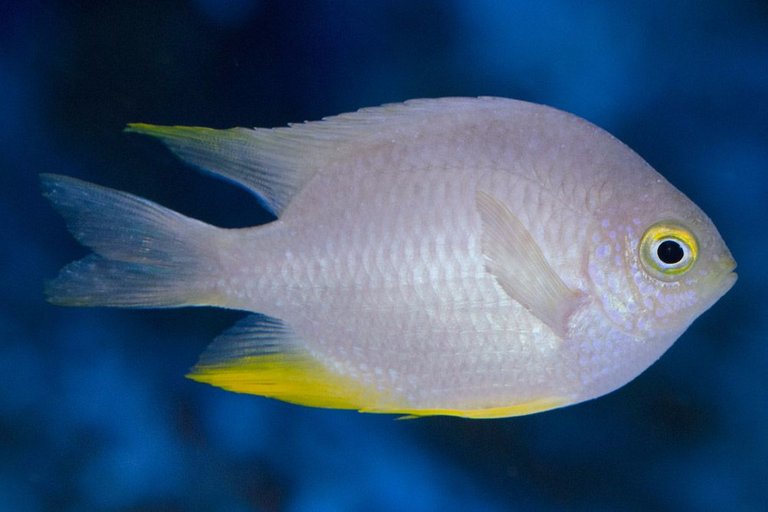In the marine world, birth and parenting take on different forms. For some fishes, fathers are the ones to carry their eggs to term. While others lay tens of thousands of eggs at once, making the seabed a nest. Some even keep their young in their mouth for protection. Here is a list of some fishes and how they care and protect their offspring before they were giving birth to.
A female Whale shark was found to have 300 embryos inside her at one time. The female whale shark may have the ability to store sperm for later fertilization. Female whale sharks give birth to live young about 40 to 60 cm long.
Whale shark image

Threadfin trevallies, like many pelagic fish, spawn by releasing a large number of eggs into the water.
Pelagic fish can be categorized as coastal and oceanic fish, based on the depth of the water they inhabit. Coastal pelagic fish inhabit sunlit waters up to about 655 feet deep, typically above the continental shelf.
Threadfin Trevally image

Triggerfish are known to prepare seafloor nests that will house tens of thousands of eggs at one time. Be careful around the nests because the Triggerfish can be very protective and would charge or bite intruders.
Queen triggerfish image

Some corals release eggs into the water during mass spawning events, once (sometimes twice) a year. Corals rely on a number of cues, such as temperature, lunar and daily cycles, to ensure male and female gametes meet.
Coral spawning image

A deep-sea Octopus has broken all previous records, guarding her eggs for over four years. The female Octopus dies when the eggs hatch because she protects her eggs until the end.
Giant Pacific Octopus image

Young Nurse sharks develop inside an egg case within the mother’s ovary. Since there is no placenta in the mother nurse shark’s ovary, the pups feed on the egg’s yolk. They also eat any unfertilized eggs and sometimes each other.
Tawny nurse shark image

African cichlids protect their eggs by holding them in their mouth, they are known as “mouthbrooders”. Even after the eggs hatch, the mother still keeps the young in her mouth for protection.
Venustus cichlid image

Male Damselfish are protective and guard eggs until they hatch. He cares for the eggs by fanning water across them with his fins and even eating dead eggs to prevent the growth of fungus and bacteria. The eggs hatch in seven days.
Golden Damselfish image

follow @peks for more
Source: https://divemasterthailand.net/contact-us/
You have posted an image in an artistic tag (photography, art, etc.) without attribution or source. By doing so you are claiming to be the content creator.
Plagiarism is the copying & pasting of others work without giving credit to the origional author or artist. Repeated plagiarism or tag abuse is considered spam.
Spam is discouraged by the community and may result in action from the cheetah bot.
More information on Image Plagiarism
More information on artistic tags
If you believe this comment is in error, please contact us in #disputes on Discord
It isn't a direct plagiarism i made some editing on it
nice and educative post. love the images
Hello @peks!
I noticed you have posted many times since you began your journey on Steemit. That is great! We love active partipants.
I do want to point out that the Introduceyourself tag is meant to be used once only to introduce yourself to the Steemit community. You have now posted 5 times using the introduceyourself tag. Please see this link for more information Tag Spam?
Please take this into consideration and help build a great platform!
Thanks i have gone through the tag; will make amends on my next post
Congratulations @peks! You have completed some achievement on Steemit and have been rewarded with new badge(s) :
Click on any badge to view your own Board of Honor on SteemitBoard.
For more information about SteemitBoard, click here
If you no longer want to receive notifications, reply to this comment with the word
STOPMe alegra verte en Steemit, Saludos.